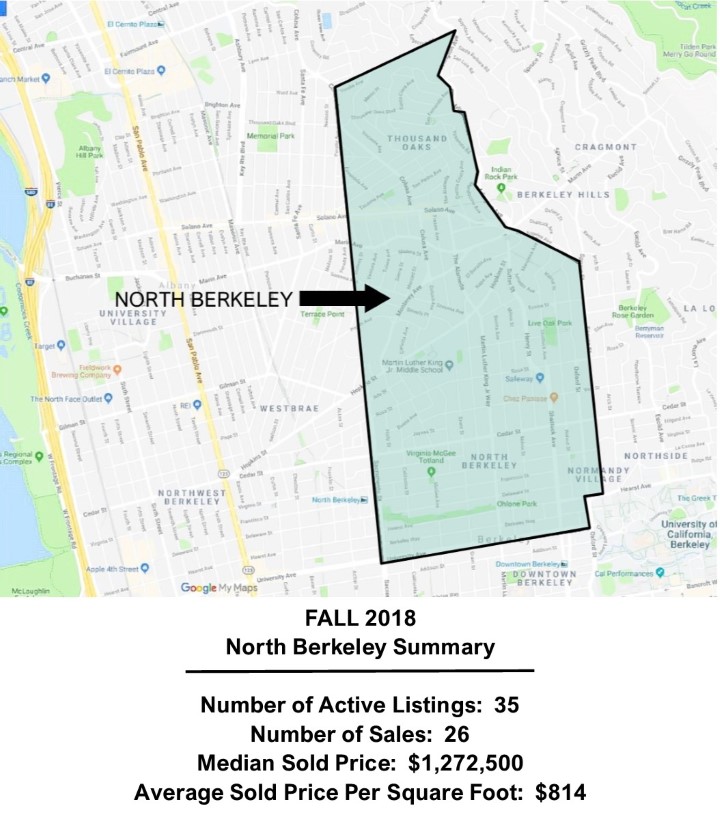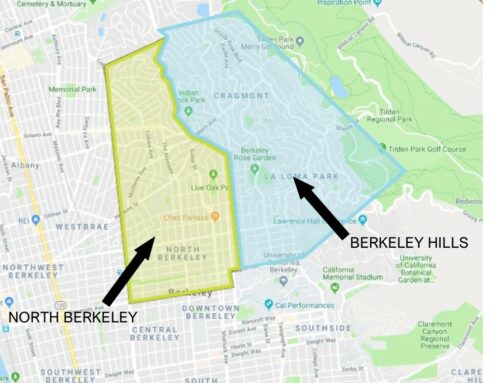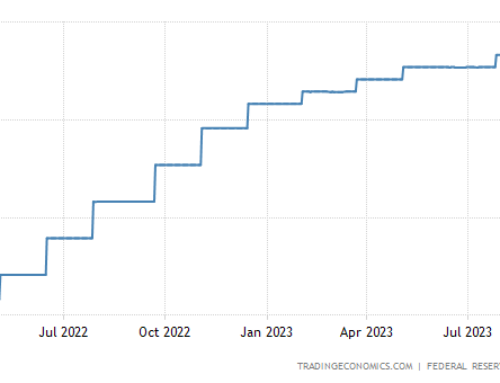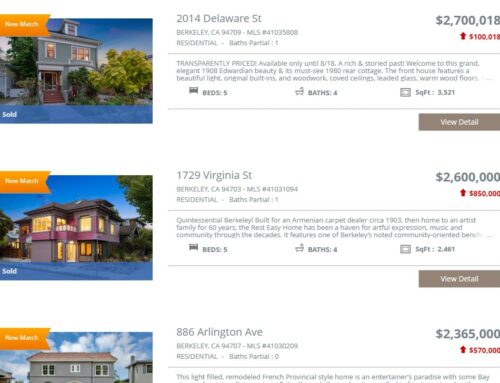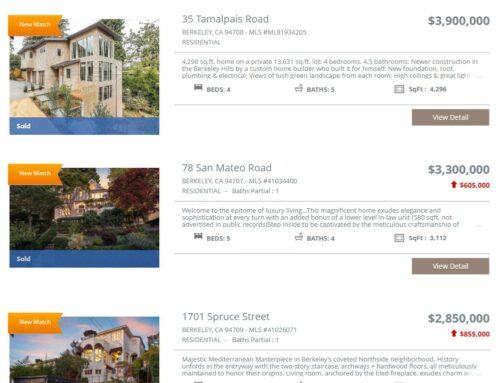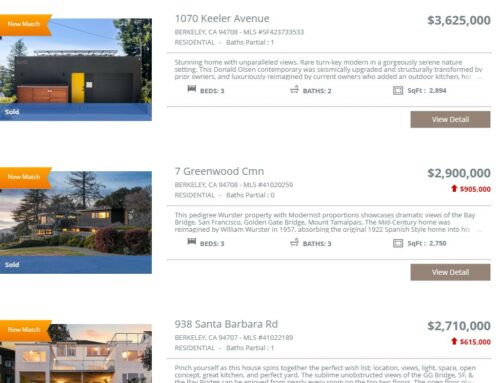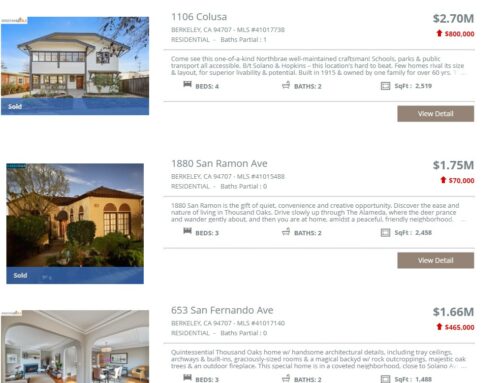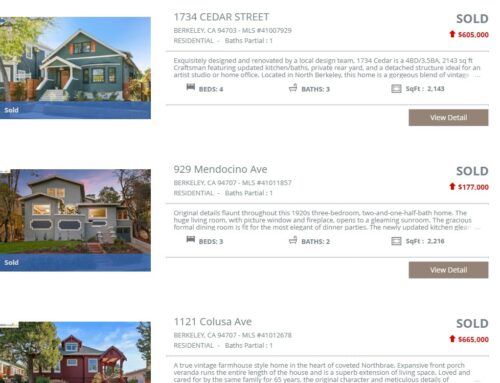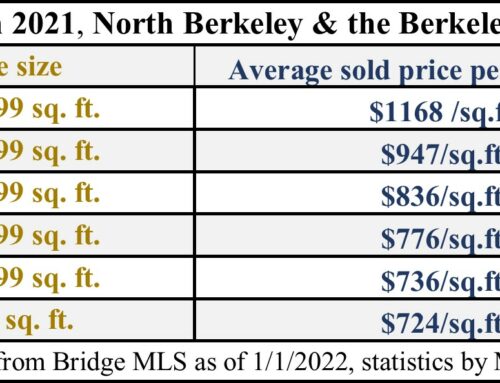There have been some real changes in the broader real estate market (in the Bay Area, statewide and nationally) since the beginning of 2018. With interest rates rising, and more limitations on the deductibility of property taxes and interest on home loans, homes are less affordable at any given price. Added to this, the tone of nationalist exclusion and the tariff wars coming to us from Washington have lessened the attractiveness of U.S. real estate to foreign investors. In light of these factors, it’s not surprising that the real estate market has cooled. We’re very fortunate, though, to live in an area that historically has weathered real estate downturns well. There is one bit of good news: the borrowing limit on conforming loans (those that can be sold to Fannie Mae or Freddie Mac) for high-cost areas like ours will be increasing to $726,525 for 2019.
How has the local market fared? Let’s look at the numbers for fall 2018. In North Berkeley, there were 35 active listings (which is just a bit on the high side), and 26 properties that sold between September and the end of November.
The average time to sell was 20 days on the market. This is a bit longer than we’ve been seeing, but there were only 3 properties that took 30 days or more to sell.
73% of the sales over the fall quarter were for more than list price, and 23% of the sales were for all cash. There were no short sales in the fall data, and no sales of bank-owned properties.
The results for prices were mixed. The median sold price for the fall was $1,272,500, which is down 9% from this summer, but up 2% from last fall. The results for sold price per square foot were similar: the average sold price per square foot was $814, down 5% compared to this summer, but up 4% compared to last fall.
2 of the 26 properties that sold had price reductions before selling, but there were still many cases of multiple offers (on average 4 offers for the properties where this was reported).
Clearly there are still buyers out there, although they are more cautious and price-sensitive. We never really know when the peak or trough of a market cycle has come until we look back in retrospect. I suspect though that we’re at or near (or even past) the turning point. If that’s true, hopefully the Berkeley market will be as resilient as ever.

